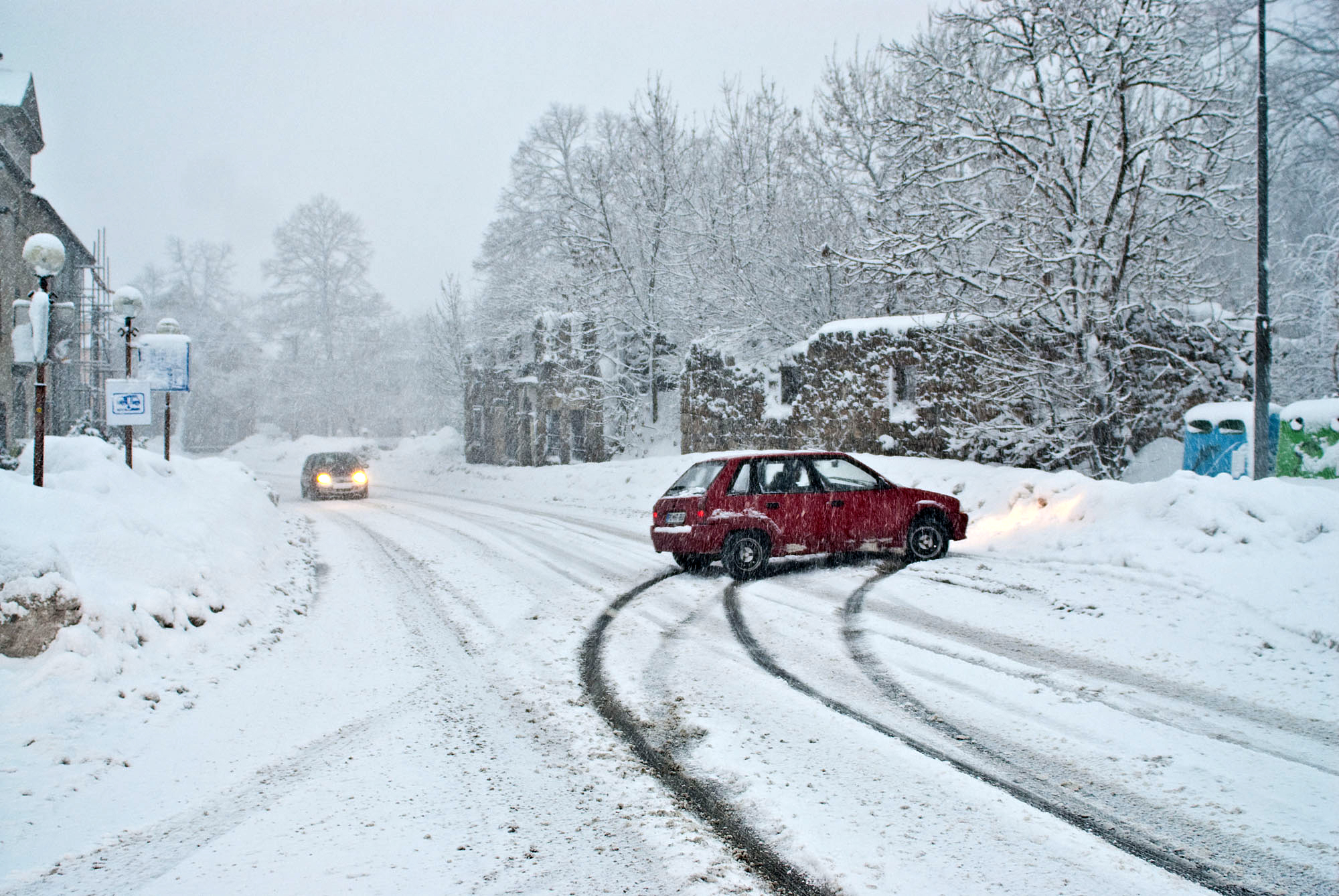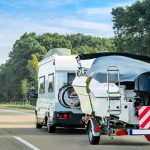
Heavy Truck Braking
On the Scene E-Newsletter, Edition 136, April 13, 2011
 Imagine while driving your car, you approach a red light in the left lane of a two lane road. There are about 8 cars in front of you, but you see that there are no cars in the right lane. You look back to see if you have room to change lanes and all you see is one tractor trailer truck moving slowly toward the red light. He’s got plenty of room in front of him, so you whip over and make it to the pole position! Not to be left behind, the car behind you decides to follow you over and helps fill the empty gap between the big truck and the red light. Why then is the driver of the big truck behaving like you’ve just cut him off with inches to spare?
Imagine while driving your car, you approach a red light in the left lane of a two lane road. There are about 8 cars in front of you, but you see that there are no cars in the right lane. You look back to see if you have room to change lanes and all you see is one tractor trailer truck moving slowly toward the red light. He’s got plenty of room in front of him, so you whip over and make it to the pole position! Not to be left behind, the car behind you decides to follow you over and helps fill the empty gap between the big truck and the red light. Why then is the driver of the big truck behaving like you’ve just cut him off with inches to spare?
Heavy trucks can weigh up to 40 times more than a car and take up to twice as long to stop; longer if the road is wet. They use different equipment than cars to manage the physics they are contending with. Equating a nimble private passenger auto to these commercial behemoths is an apple to oranges comparison. The empty space between a red light and the big rig is seen by the truck driver as needed distance to bring his vehicle to a stop. When this space is filled by opportunistic passenger vehicles, dangerous situations can be created.
Private passenger cars could be considered “over-braked” because their brakes can dissipate more horsepower than the engine can create. However, the braking performance of heavy trucks is significantly less than that of passenger cars. This is due to the lower friction associated with truck tires (which are hard and designed for longer life on straight highways versus stickier tires used on performance cars which grip better but wear out quickly) and the decreased braking efficiency of the brake designs themselves.
While most private passenger vehicles use hydraulic disc brakes, drum brakes are the predominant air brake on medium and heavy-duty trucks, tractors, and trailers in North America. There are a variety of air brake designs, each with its own efficiency in certain conditions. Unlike hydraulic caliper brakes that continually adjust the distance that is inevitably created by a wearing brake pad and its rotor, drum brakes often have to be adjusted to make up the distance between the pad and the drum. National Highway Traffic Safety Administration (NHTSA) accident data reveals that nearly 30% of all heavy truck accidents are caused by brakes being out of adjustment. Because of the potential difference in adjustment, it is possible for some of the wheels of an 18 wheeler to lock up into a skid while others do not. Weight distribution plays a role because extra weight above one wheel set can give that set an advantage in traction, affecting brake performance and control for the rest of the truck. So, braking is a function of the individual brake adjustments in each wheel in addition to the weight (load) above each wheel set.
Brake drums have to be large to cope with the massive forces that are involved, and they must be able to absorb and dissipate a lot of heat. One consequence of overheating is brake fade, which can affect both disc and drum brakes. When the drums are heated by hard braking, the diameter of the drum increases slightly due to thermal expansion. This means the brakes shoes have to move farther to be able to push against the drum. A big enough gap and the brakes lose the ability to slow the truck. Brake fade failures are often the result of a cascade: if one brake fades, the load is transferred to the remaining brakes, causing them to work harder, generate more heat and subsequently fade. This is often why you see “runaway truck ramps” as a last ditch option for truckers who overheat their brakes driving down long steep grades of highway.
Then why are air brakes and drums an attractive option for heavy trucks? Having an air brake system makes it easier to connect two braking systems together a crucial function when attaching a trailer to a heavy truck. Although the response times of air brakes are slightly greater than hydraulic brakes, drum brakes can make frictional contact across a larger area which provides more braking force. This larger contact area also allows the brake shoes to last longer, making them a more economical choice. Air brakes also have a back-up system in case of air pressure loss and unlike their hydraulic cousins, are on a separate system than the engine. A feature most fully appreciated if an engine should fail during a steep downhill decent!
An investigation involving heavy truck braking seems simple at first, but can get complicated very quickly. The experts at CED Technologies have the formal training and raw experience to identify and explore all types of braking systems as well as how they performed in a particular incident. To discuss a case, please call us at (800) 780-4221 or via E-mail at casemanager@cedtechnologies.com.






